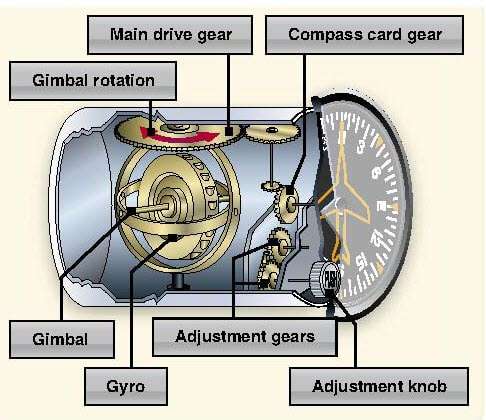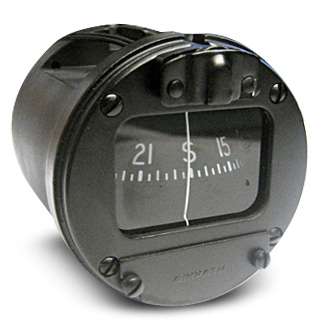Understanding The Heading Indicator (HI) Directional Gyro (DG) or Direction Indicator (DI)
The heading indicator (HI), also known as the directional gyro (DG) or direction indicator (DI), is a crucial navigation instrument in aircraft. It provides the pilot with an accurate heading, unaffected by many of the limitations that impact a traditional magnetic compass. The HI’s stability and reliability make it indispensable for safe flight, particularly in conditions where visual cues are limited.
How the Heading Indicator Works
The heading indicator operates using a gyroscope, which maintains a fixed position in space as it spins. This allows it to display the aircraft’s heading, or direction, relative to a set reference, typically true north. Unlike a magnetic compass, the HI isn’t influenced by magnetic fields, turbulence, or the acceleration forces that can distort compass readings during turns and other maneuvers.
Advantages of the Heading Indicator
One of the biggest advantages of the heading indicator is its stability. While a magnetic compass can become unreliable due to errors caused by acceleration, deceleration, and bank angles, the HI offers a steady and dependable heading reference. This stability is crucial for pilots when navigating under instrument flight rules (IFR), especially in situations like flying through clouds or at night when visibility is poor.

image source.
Drift and the Need for Calibration
Despite its benefits, the heading indicator does have one limitation: gyroscopic precession. Over time, the gyroscope inside the HI experiences slight drift due to friction and other forces. This causes the displayed heading to deviate from the true direction. To compensate for this, pilots must periodically adjust the heading indicator, typically every 10 to 15 minutes, by aligning it with the aircraft’s magnetic compass.
Regular calibration ensures that the heading indicator continues to provide accurate readings throughout the flight, despite the gradual drift that occurs.
Role in Modern and Traditional Cockpits
The heading indicator is a key instrument in both traditional cockpits and more advanced systems. In older aircraft, the HI is a standalone mechanical instrument. In modern glass cockpits, electronic flight instruments integrate heading data into more sophisticated systems, often using GPS and inertial navigation for even greater accuracy.
However, understanding the principles of the traditional heading indicator remains important for all pilots. Whether flying in older aircraft or training in basic systems, the heading indicator provides essential insight into the fundamentals of aviation navigation.
Comparison Between the Direct Reading Compass and Directional Gyro (DG) in Aviation
The direct reading compass and the directional gyro (DG), also known as the heading indicator, serve similar purposes in aviation but have key differences. The direct reading compass uses the Earth’s magnetic field to show the aircraft’s heading, but it is prone to errors caused by turbulence, acceleration, deceleration, and bank angles. It can also be slow to stabilize, especially during turns. In contrast, the directional gyro provides a much more stable and accurate heading reference by using a gyroscope. Unlike the compass, the DG is not affected by magnetic fields or motion-induced errors. However, the DG requires periodic calibration due to gyroscopic precession, where the instrument gradually drifts off course over time. Despite this, the DG’s superior stability and reliability during maneuvers make it the preferred tool for maintaining heading, particularly in instrument flight or challenging flight conditions.
| Feature | Heading Indicator (Directional Gyro) | Direct Reading Compass |
|---|---|---|
| Type | Gyroscopic instrument | Magnetic compass |
| Operation | Measures aircraft’s heading using gyroscopic precession | Uses Earth’s magnetic field to show heading |
| Accuracy | More stable, but drifts over time (needs adjustment) | Can be affected by magnetic deviation and turbulence |
| Usage | Primarily for reference, needs periodic alignment with compass | Provides direct heading at all times, used as backup |
| Precession/Errors | Subject to gyroscopic drift (precession) | No precession, but affected by turning/acceleration errors |
| Power Requirement | Requires electrical or vacuum power | No external power needed, purely mechanical |

image source.
Conclusion
The heading indicator (HI), also known as the directional gyro (DG) or direction indicator (DI), is an essential tool for accurate aircraft navigation. It offers a stable, reliable alternative to the magnetic compass, making it vital for maintaining heading, especially in low-visibility conditions. Though it requires regular calibration to correct for gyroscopic drift, its advantages far outweigh this minor inconvenience. In both modern and traditional cockpits, the principles of the heading indicator continue to play a central role in safe and efficient flight operations.


